If or when Miami-Dade Mayor Carlos Gimenez gets his 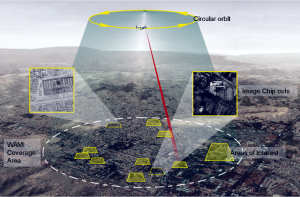 grant to put a spy plane in the sky — a wide area surveillance program that will capture video indiscriminately over 32 square miles at a time — he may find a few no-fly zones over some of the 37 municipalities within the county boundaries.
grant to put a spy plane in the sky — a wide area surveillance program that will capture video indiscriminately over 32 square miles at a time — he may find a few no-fly zones over some of the 37 municipalities within the county boundaries.
“He’s going to have to do it in unincorporated Dade because he has no jurisdiction here,” said Miami Mayor Tomas Regalado. The county department has an interlocal agreement with Miami Police that allows them certain cooperation and limited authority within 500 feet of the city limits.
“But investigations have to be done by Miami Police,” Regalado said.
The mayor’s intent to spy on the entire county population indiscriminately was first disclosed by Miami New Times and details were later explained in a Miami Herald story. The Iraq war technology was first used in Baltimore after the police shooting and it became controversial because it was implemented in secret — kind of like Gimenez did here, again going ahead with the application for a $1.2 million federal grant for a pilot program before asking the commission for approval. Of course the police director is saying that they had to apply before the deadline, but it could have been brought up in the last meeting. They did it on purpose because it’s easier to say “oops” than to ask for persmission.
Times and details were later explained in a Miami Herald story. The Iraq war technology was first used in Baltimore after the police shooting and it became controversial because it was implemented in secret — kind of like Gimenez did here, again going ahead with the application for a $1.2 million federal grant for a pilot program before asking the commission for approval. Of course the police director is saying that they had to apply before the deadline, but it could have been brought up in the last meeting. They did it on purpose because it’s easier to say “oops” than to ask for persmission.
This isn’t even a crime fighting tool. This is $1.2 million for an investigative tool to use after a crime has been committed. The cameras mounted on a small plane that orbits a designated area records 32 square miles at a time and the footage is reviewed later to see if the police can track the perpetrators back to where they came from after a murder or bank robbery. It’s invasive and violates people’s right to expected privacy, because in the process of video taping the bank robbery or the purse snatching, the wide survillance eye also captures your backyard barbecue. You can’t make out the faces, but  you can count how many people were there, maybe who was dancing with who? And if the same public records rules apply, does that mean that wives can now ask for video tapes to see if their husbands were cheating or parents can ask to see where their kids go when they skip school? Who gets to decide?
you can count how many people were there, maybe who was dancing with who? And if the same public records rules apply, does that mean that wives can now ask for video tapes to see if their husbands were cheating or parents can ask to see where their kids go when they skip school? Who gets to decide?
And how do we know it won’t be used for code enforcement? To catch someone with an illegal gazebo and fine them for it? (Count on Commissioner Rebeca Sosa to ask.)
Ladra hopes that the commission balks but they’ve been rubber stamping everything of the mayor’s lately, even after they question it and hem and haw and say they shouldn’t, they approve whatever he brings them. Maybe the municipal mayors will come and speak out.
“I am a big believer in the right to privacy,” said Miami Lakes Mayor Manny Cid. His town was one of the first to adopt their own policy — even before the state legislature — that does not allow police to use drones without a warrant. He was a councilman when he voted in favor of the policy.
“That said, look at how much the private sector has invaded our privacy,” Cid told Ladra, addi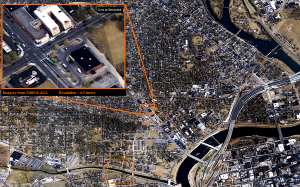 ng that the GPS in our phones tracked our every move. “Google and Facebook have more information on our residents than we do.”
ng that the GPS in our phones tracked our every move. “Google and Facebook have more information on our residents than we do.”
Cid said he wants to look at what Gimenez is proposing and give him a chance to explain. “But our mission is to make sure we are a private community, that people know that they can go into their backyard and it is their domain,” he said. “Our number one objective is obviously public safety, but we need to prote our residents’s privacy as well.”
South Miami Mayor Phillip Stoddard said he can only see using the wide area surveillance for a live chase. “If they can put a plane up when they are looking for a fugitive, then maybe. But without probable cause? I cannot imagine my residents tolerating that,” Stoddard told Ladra.
Ditto for Homestead: “I’m certainly not going to be in favor of having silent drones flying over Homestead spying on people,” Mayor Jeff Porter said. 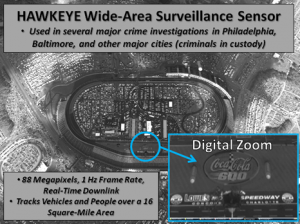 “You can’t cast that large a net. Don’t spy on all of us.”
“You can’t cast that large a net. Don’t spy on all of us.”
The plane would likely fly in neighborhoods with high crime statistics. That means low-income inner city residents would be spied on more than affluent white folk. Miami Gardens will get it more than, say, Coral Gables. Now, sit back and watch as very little public outrage comes forth. Mayor Oliver Gilbert was out of the country and Ladra could not reach him to get his feelings on the spy in the sky.
Two other mayors who Ladra did connect with didn’t like the idea too much but didn’t want to get into a pissing match with the county mayor on Political Cortadito. Gimenez apparently reads it because el les hala las orejas when they talk to me.
Mayor Gimenez told the Miami Herald that we, the taxpaying property owners of Miami-Dade, can’t expect privacy even at our own homes. “You have no expectation of privacy when you walk outside. I have no expectation of privacy in my backyard,” said the mayor, who happens to live in Coral Gables where the plane will likely never fly.
So Ladra invites readers to prove him right: Go to the mayor’s house, 4061 S. LeJeune Road, and see if he’ll let you take pictures of the family in the backyard. Then post it with a new hashtag. Something like #privacyisfortheprivileged or maybe #yourbackyardismybackyard. Or even #Iamspyplane
read more
Miami City Commission candidate Ralph Rosado sounds 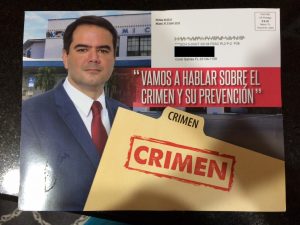 like an incumbent on the most recent mailer that arrived in some Miami voters’ homes Wednesday.
like an incumbent on the most recent mailer that arrived in some Miami voters’ homes Wednesday.
“Let’s talk about crime and it’s prevention,” it says on the front.
“I have worked to guarantee that our police department can count on the sufficient number of police officers to keep us protected and also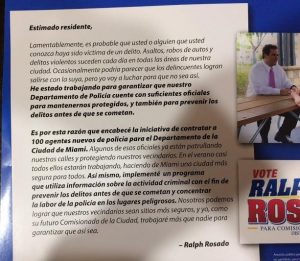 prevent crimes before they are committed. That is why I spearheaded an initiative to hire 100 new officers,” it says on the back.
prevent crimes before they are committed. That is why I spearheaded an initiative to hire 100 new officers,” it says on the back.
That may come as a surprise to the mayor and city commissioners.
“It’s a lie,” said Mayor Tomas Regalado.
“I know he is running and he wants to be elected but you can’t get into elected office through fraud. That’s an injustice to the voters,” Regalado said. “It’s also an insult to the administration and the commission who worked hard and had to make many hard decisions to get to this point,” the mayor told Ladra, adding that they are at more than 180 additional officers in the past two years.
Of course, Regalado is supporting another candidate in the District 4 race: Manolo Reyes, an economics teacher who used to work in the city’s and the Miami-Dade School Board’s budget offices. There are a couple of other candidates who have showed an intention to run for the seat vacated by Commissioner Francis Suarez‘s mayoral bid, but, so far anyway, this is really a contest between Rosado and Reyes, who is a perennial candidate — but at least he doesn’t jump from seat to seat (Rosado also ran for state rep) and exaggerate his laurels.

Last summer’s graduating Miami Police cadets
Because Rosado’s role in the police staffing increase was basically going to a budget hearing a couple of Septembers ago and urging the commission to hire more police officers. That’s it. He was the first of two speakers on that item. The second was pollster and radio show host (until last week) Fernand Amandi, whose home had been burglarized. It’s a little disingenuous then to send a mailer where he basically takes credit — “spearheading” the initiative and all.
“I am not a commissioner and I have no power over the police department. But heck yeah, I was there for 11 hours and I met with people for days prior and I did the research,” Rosado told Ladra.
“Can I say only because I spoke did it happen? I can’t say that,” he admitted. “But if nobody brought it up, maybe it wouldn’t have happened.”
Really? Well then, I say don’t run for office. Just go to every meeting and speak on the issues we need action on. Because, most likely, the new hires would have happened anyway. The shortage had reached a boiling point. And Amandi spoke, too. Maybe it was his words that moved Commissioner Marc Sarnoff to make the motion.
In his email, Rosado also said that he “implemented a program that uses crime data with the goal of trying to prevent crimes before they happen and concentrate police work in the most dangerous areas. We can make our neighborhoods safer and I, as your future City Commissioner, will work harder than anyone to guarantee that we do.”
And that’s at least a little more truthful. But not entirely.
What he did was bring the FIT Zone program used in East Palo Alto, California, to the attention of the city commission, complete with a Power Point presentation on July 14 last year. The program takes data from the ShotSpotter gunshot detection system put in place in 2014 and finds public spaces near hot spots — a time and area where there is consistently a flurry of firearm activity — to then program fitness activities, targetting at risk kids and the people in the surrounding homes. Miami’s pilot program is on Monday nights with a basketball league and other activities at Overtown’s Reeves Park and it’s a huge success, Commissioner Suarez said.
activities at Overtown’s Reeves Park and it’s a huge success, Commissioner Suarez said.
“He did come up with the idea and the results have been incredible,” Suarez said. “He did discover it. He did study it, flying to Palo Alto to see how it worked there. And he convinced me to execute it here.”
So, why didn’t Rosado send a mail piece just on that? Why not be honest and include more details about the lives the program could be changing, which would be more powerful? Oh, wait, I know. Because Reeves Park is not in District 4. So it’s better to be vague. I would imagine that voters in District 4 who get this mailer could logically think the program benefits “our neighborhoods.” It doesn’t. And it won’t anytime soon. According to Commissioner Suarez, the next two hotspots under consideration for an expansion of the program are in Liberty City.
Kudos to Baby X because he represents the whole city and is not provincial. And kudos to Ralph for going out of his way to bring us FIT Zone.
But it doesn’t make it okay to exaggerate or misrepresent his role on campaign materials, which is what Rosado did with the two crime-fighting claims in this mailer. One’s an outright lie and the other is a half-truth.
read more
Carlos Gimenez cronyism could cost us future millions
Miami-Dade Mayor Carlos Gimenez and his pals on the county commission are trying to sell us a bridge. Not just any bridge. His buddy’s bridge.
Recent hand-wringing over the selection of a firm to design and build an iconic, new signature bridge over Biscayne Boulevard along I-395 has cast a spotlight on just how  Gimenez uses the office of the the county mayor to benefit his friends and family members.
Gimenez uses the office of the the county mayor to benefit his friends and family members.
The beneficiary this time (again) is Pedro Munilla, who is cousins or something with the mayor’s wife and CEO of Munilla Construction Management. The company gets a lot of government contracts. But not this one (the rendition inset in this paragraph). MCM was one of five firms that bid on the $800 million “signature bridge” project, in partnership with Fluor Enterprises. But it was ranked second by a Florida Department of Transportation selection committee after a process that has taken, on and off, about 25 years. Archer Western/De Moya was ranked first.
Read related story: Miami-Dade mayor’s pal gets $6 mil extension on contract

Pedro Munilla, pictured here with his wife, is often out at galas with Mayor and Lourdes Gimenez.
One week later, Gimenez wrote a letter asking the FDOT, which is providing $600,000 and overseeing the project, to delay the contract so that the county could weigh in (read: so that Munilla can get a second chance). And he’s using some of his pocket commissioners, like Sally Heyman — well, to be honest, the Munillas write a lot of checks — to try slow the process down. Heyman passed a resolution at the Transportation Planning Organization Thursday urging the FDOT to let them review the bids and provide feedback. It’s not like they don’t have the time anyway, she added, if the Munillas file a bid protest as they have said they intend to do (don’t they always?). That could take up to five or six months to resolve, according to FDOT Secretary James Wolfe, who looked like he couldn’t believe they were even talking about this.
Feedback on a selection that has already been made? To what end? Do these lunatics actually expect the FDOT to suddenly change their minds, switch gears and award the contract to the obviously politically-connected, second-ranked bidder that applied palanca?
That is the $800 million question. And, yes, they do. Because that’s how it’s done in the 305. The FDOT is a state agency used to dealing with state contracts where procurement is less, well, political. But it’s really not that complicated as everyone wants to make it seem. The argument that the mayor and Heyman are making center on the premise that there has not been enough community involvement. Suddenly, out of the blue, after the contract has been awarded, during a public process with dozens of meetings and during which a county commissioner served on an advisory committee, the mayor wrote that the county wants to have more input.
How much you wanna bet he wouldn’t be seeking that input if Munilla had gotten the contract?

This is the Archer Western/De Moya bridge designe that was ranked first by FDOT. It is meant to look like a water fountain.
Because the truth is that, despite a Miami Herald story earlier this month that looks planted and almost manipulated by the mayor’s staff, there has been plenty of discourse and public input on the project. And Ladra is not just talking about the Aesthetic Review Committee on which Commissioner Audrey Edmonson sat, which was how the FDOT settled a lawsuit from city of Miami Mayor Tomas Regalado and then Commissioner Marc Sarnoff in 2013.
“What was settled in 2013 was not honored,” Heyman said at Thursday’s meeting.
Really, Sally? Really? Only Miami Gardens Mayor Oliver Gilbert got it right. The committee makes a recommendation. That doesn’t mean their recommendation has to override what the FDOT technical committee decides is the best bridge for traffic control reasons as well as aesthetic. Remember that easing traffic is the real reason they are doing this. Aesthetic concerns are just an additional bonus.
Read related story: Pot calls kettle black in Trial Rail bid protest by MCM’s Munilla
In fact, let’s review the history of the public input into efforts to build this particular bridge, which the FDOT started to look at around 1992. This timeline was put together with the help of three people close to the process, including a transportation professional and an engineer who has been working on different versions since the original 1992 one. Plus, Ladra was here the whole time.
Even back then, the back up from the northbound I-95 ramp on the 836 was causing havoc on downtown traffic,  where ingress and outgress also wasn’t cake. There was also projected growth (its come true) that needed accomodating so they came up with a master plan that was not very masterful, just pretty much just widening and adding lanes. The black community balked because, shit, it looked like a repeat of what messed up Overtown so long ago when they first built I-95 and I-395 right through the community’s commercial streets. In 1996, the project died because there was so much community opposition.
where ingress and outgress also wasn’t cake. There was also projected growth (its come true) that needed accomodating so they came up with a master plan that was not very masterful, just pretty much just widening and adding lanes. The black community balked because, shit, it looked like a repeat of what messed up Overtown so long ago when they first built I-95 and I-395 right through the community’s commercial streets. In 1996, the project died because there was so much community opposition.
People still talked about doing something in the future, though. They had to. They knew something had to be done eventually. Ideas included tunnels and elevated options. Somewhere between 2003 and 2004, the TPO’s predecessor, the Metropolitan Planning Organization, asked the FDOT to look at it again and while they were doing that, Regalado and Sarnoff sued the state to ensure it would be an iconic bridge that would represent the city for decades to come. The settlement was the creation of an unprecedented aesthetics review committee that had, among its members, a representative from each the county, the city of Miami, the Downtown Development Authority and a  the Adrienne Arscht Center for the Performing Arts, which was next door.
the Adrienne Arscht Center for the Performing Arts, which was next door.
This commitee not only had a chance to take the original 18 bridges submitted and shortlist it to seven, they were also given a scoring role, which was not agreed to in the lawsuit settlement. They were given far more power than the FDOT needed to give them. But the state didn’t stop there.
The FDOT opened up an office in Overtown and met with hundreds of people over the course of years. Congresswoman Federica Wilson took a group of people because Ladra saw a picture of that meeting and of about a dozen other meetings where they discussed what they wanted to see in their neighborhood. Perhaps they couldn’t look at specific drawings. They couldn’t. The procurement process has to be done in a “cone of silence” precisely to keep the politics out of it. But they provided feedback on what they wanted to see. There was so much feedback, in fact, that transportation officials soon realized they would not be able to just widen and add lanes. They had to bring some life back into the neighborhood if the project was to move forward. The design includes a park underneath the bridge, the “Heritage Trail” that serves sort of like an North end Underline on steroids with actual historic significance in a part of the county and city that is too often ignored (more on that later).
The process has won awards for its public input. It has been an uprecedented process for FDOT.
And, now, because of the political meddling of a corrupt mayor, they will likely not repeat it. Who would blame them? This cronyism crap is probably also going to cost us millions in the future. Just when we are going to need state and federal dollars the most for our SMART plan to expand mass transit, our mayor pulls the political palanca stunt. Does he really think the FDOT is just going to forget about it and come back for more of this? Heck, there’s already talk that Tampa officials are calling the state agency and saying they will let the FDOT spend the $600 million in Tampa any way they want. And, believe me, those calls are getting more and more attention.
Read related story: Carlos Gimenez son’s firm got $4 million PAC repair job
Ladra is certain that the second-ranked Munilla bridge was pretty. It does look like dancers, however, and that may be why it got a perfect score from John Richard, director of the Adrienne Arscht Center for the Performing Arts (which three years ago gave a no-bid contract worth $4 million to a company that employed the mayor’s son). Richardstanked the other bidders and gave the Munilla project the only perfect score, which is the only reason that the Fluor/Munilla project got scored half a point under Archer Western. Expect Gimenez and others to make a big deal out of that small gap. But please remember that the only reason that happened was Richard’s scoring. He dnot only gave the only perfect scores to Fluor/Munilla, he was also the only one to score the Archer Western bridge as poor. Everybody else was either very good or good or excellent (which is what Edmonson ranked it). And remember that Richard’s facility depends on Gimenez for subsidies that are now competitively sought by other facilities, like the Frost and PAMM museums.
Maybe Richard is acting on Gimenez’s behalf. Because there is no doubt here that Gimenez is acting on his buddy Munilla’s behalf.
The fact that he is so bold and blatant about it is what should be most concerning. Because it shows that Gimenez, who is termed out after these next three and a half years, is going to use his remaining time on the 29th floor to get his friends and families as much as possible.
Like an $800 million bridge.
read more
And the lucky residents of Kendall may be the winners
Zika may be out of the daily headlines and daily heads — for now. Because experts have already said that the virus 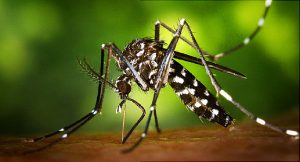 could, and very likely will come back as mosquito season returns to South Florida this summer.
could, and very likely will come back as mosquito season returns to South Florida this summer.
And, of course, Miami-Dade Mayor Carlos Gimenez — who had cut mosquito control funding in previous years and was caught unprepared for the 2016 crisis — has a plan this time: He wants to drop thousands, perhaps millions of genetically modified mosquitos to mate with the female Aedes aegypti species that spreads Zika — as well as Dengue, yellow fever and chikungunya — and eventually kill them off, producing offspring that die before they reproduce.
That’s right. Gimenez, the former firefighters, wants to fight fire with fire. He met with Miami Mayor Tomas Regalado and Miami Beach Mayor Philip Levine about it earlier this month and pitched the proposal. Also there: Miami-Dade Deputy Mayor Alina Hudak, Miami Beach City Manager Jimmy Morales, Dr. Lilian Rivera, the head of the Miami-Dade Department of Health, and a few other municipal staffers. The topic: What everyone is doing to prepare for mosquito season.
Miami-Dade was scarred by the Zika bite last year that seemingly ate into our tourist dollars after Wynwood became ground zero, the home to the first locally-transmitted case and, eventually, dozens bite victims, although the disease is generally undetected and is feared to cause encephelitis in the unborn children of pregnant women. Wynwood was declared a Zika zone by Gov. Rick Scott and put on a travel advisory by the Center for Disease Control and Prevention. Later, Miami Beach became a secondary zone with 19 cases.
This is where Gimenez asked Miami and Miami Beach to host the mutant mosquitoes.
It isn’t so far-fetched. The technology of GMO mosquitoes, as they are called,  has been used in Panama, the Cayman Islands and Brazil, where they have reportedly reduced the population of Aedes aegypti mosquitos by 90 percent. The World Health Organization has concluded that GE mosquitoes, as they are also called, “warrant time-limited pilot deployment, accompanied by rigorous monitoring and evaluation.”
has been used in Panama, the Cayman Islands and Brazil, where they have reportedly reduced the population of Aedes aegypti mosquitos by 90 percent. The World Health Organization has concluded that GE mosquitoes, as they are also called, “warrant time-limited pilot deployment, accompanied by rigorous monitoring and evaluation.”
Key words: rigours monitoring and evaluation.
Because these are still mosquitos, after all. They may not bite, because only females bite, but they still buzz. They still fly around your face and bug you. We don’t know what other diseases they may carry and pass on to the females, who do bite. Or to dogs and cats. We don’t know how strong they can get. We don’t know how resistant they are and how they may further mutate or how they may affect other populations, like birds or reptiles or other bugs. Could we be creating a super-resistant mosquito species? There’s been relatively little research or study.
And Gimenez wants to do the trials here.
While he says they will all be male mutant mosquitos, it’s kinda difficult to differentiate between males and females when you are sorting millions of them, and trials in Costa Rica and elsewhere have shown that about .03 % of the mutant mosquitos that are released are female.
Read related story: Zika politics — State House candidate has repellant wristbands
That might sound like a small number. But if 3 million mutant mosquitos are released, that means 900 of them could be female. And what happens when a female mosquito with altered DNA bites a human?
Do you know how they genetically alter these mosquitos to carry a “genetic kill switch,” so the offspring (hopefully?) inherits the lethal gene and cannot survive? Why, they insert “protein fragments” from the herpes virus, E. coli bacteria, coral and cabbage into the insects. Did we mention E. coli?
So what happens if one of the 900 females bites one of us? Can they pass their mutant DNA into our bloodstream?
It’s a controversial solution because there are still so many unknowns. Residents in the Florida Keys collected 160,000 signatures against releasing the mosquitoes in Monroe County, even though voters approved the deployment — as a Zika fighting tactic — in a referendum vote last November. Curiously enough, the Keys hasn’t had a single case of Zika reported. And they haven’t had a Dengue fever report since 2010. Ladra doesn’t know what voters were thinking.
But at least they were given the choice in Monroe County. Gimenez won’t do that here. Because this pilot program  likely comes with some federal or state grant and its his way of funding mosquito control this year, instead of adding inspectors and staff to code enforcement to cite people who keep dirty, infested pools as breeding grounds. In fact, Oxitec has provided the mutant mosquitoes to some cities for free so they get to do their trials. So maybe he’ll use the grant money someplace else. This science may be unproven and there could be unknown risks, but Gimenez doesn’t want to increase funding for code enforcement or add mosquito control inspectors when, you know, that doesn’t help his contributors or the people on his friends and family plan. And this will make it sound like he is doing something substantial, rather than just taking a stab in the dark.
likely comes with some federal or state grant and its his way of funding mosquito control this year, instead of adding inspectors and staff to code enforcement to cite people who keep dirty, infested pools as breeding grounds. In fact, Oxitec has provided the mutant mosquitoes to some cities for free so they get to do their trials. So maybe he’ll use the grant money someplace else. This science may be unproven and there could be unknown risks, but Gimenez doesn’t want to increase funding for code enforcement or add mosquito control inspectors when, you know, that doesn’t help his contributors or the people on his friends and family plan. And this will make it sound like he is doing something substantial, rather than just taking a stab in the dark.
Or a bite.
The mutant mosquitoes also still swarm in dark, ominous clouds — and that is not an attractive postcard picture for tourists. That’s the main reason Miami Mayor Regalado said nananina when Gimenez offered to try a pilot program in the Wynwood area that was first hit with last year’s outbreak.
“After what happened in Wynwood last year, if we start soltando mosquitos ahi, those people will suffer again. 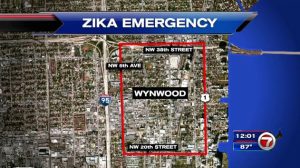 They’ve had enough,” Regalado told Ladra. The clouds of mosquitos and the mere perception that an infestation — even of mutant mosquitos — could have on tourism is not worth it, the Miami mayor said.
They’ve had enough,” Regalado told Ladra. The clouds of mosquitos and the mere perception that an infestation — even of mutant mosquitos — could have on tourism is not worth it, the Miami mayor said.
“We had the experience that Wynwood was crucified publicly,” Regalado said, referring to the effect the multiple cases reported in that Miami neighborhood had. “If they suddenly release all of these mosquitos that are genetically altered, it will cause a doubt for people who want to go to the Wynwood area.
“It will have a chilling effect to see a cloud of millions of mosquitos buzzing around.”
Regalado doesn’t think it’s a good idea anywhere. “It will create more anxiety in the county. The perception will be that we have more mosquitos,” he said. “They should be looking at ways to spray without using toxins like Naled. We need to focus on code enforcement and eliminate the receptacles and dirty pools that breed mosquitos.”
In Miami, the city has placed 200 electric traps in Wynwood, Little Haiti, Little Havana, Liberty City and the Design District, Regaldo said. They were donated from a company in Texas and “they have been working to reduce the population of mosquitos.”
After Regalado said no thanks to the mutant mosquito army, Gimenez apparently turned to the Beach, wanting to dump the little buggers there.
Read related story: Joe Garcia and Carlos Curbelo agree on Zika
“No, no, no, no, no, no, no,” said City Manager Jimmy Morales, correcting Ladra, but also likely repeating what he said at the meeting with Gimenez. “What he said was that the EPA is willing to authorize a test and that the place that makes the most sense is in Miami Beach.”
Morales, who is very diplomatic, said he didn’t think it would be welcomed in Miami Beach, however, where residents complained loudly about the Naled that was sprayed to contain the small Zika outbreak there. “The same group that didn’t like the Naled, don’t like the [genetically modified] mosquitos.
“If there was any decision to do anything, we would have to bring it before the commission at a public hearing,” Morales told Ladra. And, he said between the lines, that’s not gonna happen.
“I don’t see that as a likely decision at all. Neither does the mayor.”
Gimenez spokesman and, now, senior advisor Michael Hernandez did not return several phone calls and text messages from Ladra asking for clarification. But both Regalado and Morales, a former county commissioner who once ran for mayor, confirmed the meeting took place and that both cities were offered the “pilot program.”
After Gimenez was rejected a second time, Regalado said, the Miami-Dade mayor announced that the county would dump the mutant mosquitos somewhere far away from the two cities — probably from any cities, so he doesn’t get the same kind of resistance.
“The only option is South,” Regalado said.
Are you listening Commissioner Joe Martinez? Because Ladra thinks this means your people. Far away and with no cities? That sounds like West Kendall to me.
read more
One of the biggest 2017 political questions in the 305 is will she or won’t she?
We’re speaking, of course, about former Miami-Dade School Board Member 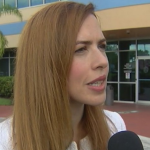 Raquel Regalado, who lost a bid to unseat Miami-Dade Mayor Carlos Gimenez in November. She has been dogged for more than a year by rumors that the county campaign was nothing more than a precursor to a run for the city’s mayoral seat, where her father sits now.
Raquel Regalado, who lost a bid to unseat Miami-Dade Mayor Carlos Gimenez in November. She has been dogged for more than a year by rumors that the county campaign was nothing more than a precursor to a run for the city’s mayoral seat, where her father sits now.
But that makes such little sense. Why would she risk getting $8 million worth of attack ads to do a preview campaign in a city where Raquelita’s name recognition can hardly be improved?
Don’t ask Ladra. While we were on Team Raquel last year, something happened and she doesn’t return my calls anymore. Hardly returns my texts. Maybe she blames me for her loss but she is the one who cut me out of her inner circle in September. After several attempts to reach her, last month I finally sent a final text message saying that Ladra would have to say she did not respond to multiple attempts to reach her. Electeds hate that. Former electeds who want to be elected again hate that, too.
Her texted answer: “I’m considering my options and will announce my decision in January.”
Me: “Hmmmm…No details on what options those might be. LOL.”
Raquel Regalado: “Nope.”
Read related story: Raquel Regalado’s message: ‘I can be a better mayor’
It’s January. So, folks, we will soon find out together if she is going to run for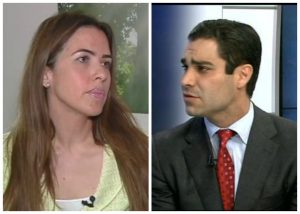 city of Miami mayor, as many are whispering. After much reconsideration, Ladra would bet she will. After all, wouldn’t she just say she wasn’t if she wasn’t? Why would she just let it keep being a mystery? Unless it’s just to make Commissioner Francis Suarez, who has already opened his mayoral campaign account, sweat it out. And that is not completely unfathomable.
city of Miami mayor, as many are whispering. After much reconsideration, Ladra would bet she will. After all, wouldn’t she just say she wasn’t if she wasn’t? Why would she just let it keep being a mystery? Unless it’s just to make Commissioner Francis Suarez, who has already opened his mayoral campaign account, sweat it out. And that is not completely unfathomable.
But if she does finally throw her hat into the ring for that race, Ladra doesn’t think that this was the plan all along. Not everybody did, but Raquel Regalado truly thought she could beat Gimenez and be a better county mayor. She spent hundreds of hours poring over the county budget information and studying transit information and learing about solid waste management operations — stuff that is not going to necessarily serve her as mayor of Miami.
But maybe, since she lost, it’s become a consolation prize. Because nobody can imagine Raquelita would actually just sit and wait and do nothing more than a weekday afternoon radio show — even if she gets to go to Tallahassee every now and then — for four years before running again countywide. That girl is antsy! And patience is not one of her virtues.
Ladra always thought she would do some policy-driven or issue-oriented thing — like the courtroom referendum tax she campaigned against all by herself (which helped to put her on the county map). Maybe she’ll take on courthouse reconstruction reform. Or some kind of referendum on the county’s transit dollars, since she knows they are being misspent. She did talk on the night of her defeat about working to pass campaign finance reform and having a supervisor of elections that is elected rather than appointed by the mayor. It is not beyond Raquelita’s reach to create a PAC on either one of those items and start to deliver for us even if she is not an elected. She’s very, um, driven that way.
referendum tax she campaigned against all by herself (which helped to put her on the county map). Maybe she’ll take on courthouse reconstruction reform. Or some kind of referendum on the county’s transit dollars, since she knows they are being misspent. She did talk on the night of her defeat about working to pass campaign finance reform and having a supervisor of elections that is elected rather than appointed by the mayor. It is not beyond Raquelita’s reach to create a PAC on either one of those items and start to deliver for us even if she is not an elected. She’s very, um, driven that way.
Read related story: Raquel Regalado set to fight anew for charter change, reform
There’s always a state seat. Regalado’s ideas and policy issues are more suited for a legislator at the state or federal level — even if she doesn’t realize it yet. The newly elected Rep. Nick Duran, who won an open seat, is not unbeatable in two years and the Regalados endorsed another candidate in that race. So that’s not impossible.
Others have speculated that she would run for city commission in District 4 once Suarez resigns to run. But it is doubtful that she would go up against longtime family friend Manolo Reyes, who 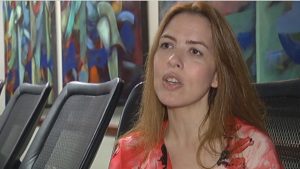 has already filed paperwork for that seat and who is being endorsed by her father, Miami Mayor Tomas Regalado. And that would kinda be a step down, no? Not at all in her character. She’s too big for a commission seat.
has already filed paperwork for that seat and who is being endorsed by her father, Miami Mayor Tomas Regalado. And that would kinda be a step down, no? Not at all in her character. She’s too big for a commission seat.
But a mayoral run, justified by the excuse that no other candidate is really ready or qualified (and, yes, Baby X should take it personally), might just be the right size. And it fits in her character. I heard there was even a poll where she was cast as one of the potential candidates (more on that later). And a credible source tells Ladra that a couple of lobbyists have told him they have to “give to everybody” for this mayoral race: Suarez, Commissioner Frank Carollo — who is termed out and expected to make a run for the office — and Raquelita.
So maybe they know something we don’t. As usual.
Or maybe the money she is raising is for a PAC?
Stay tuned. There are only 26 and a half days left in January.
read more
The future plans for the Miami Marine Stadium will be the topic of discussion this week at the Tuesday Morning Breakfast Club meeting in Miami Beach.
discussion this week at the Tuesday Morning Breakfast Club meeting in Miami Beach.
Don Worth, co-founder of the Friends of the Miami Marine Stadium — which advocates for the Bayside watersports stadium’s restoration — will be the guest speaker and bring people up to date on the latest developments, including a proposal by Miami Mayor Tomas Regalado for some $45 million in bond referendum dollars to fund improvements that has gotten some lukewarm response.
Last May, City Commissioners took what many longtime advocates consider the first serious step in the promise to repair and reopen the landmark — closed since 1992 — when they chose a team that includes a noted preservationist architect, Richard Heisenbottle, and the original architect of the stadium, Hilario Candela, to design the renovation. Heisenbottle led the renovation of both Miami City Hall and the Olympia Theater at the Gusman Center downtown.
That was a win for the Friends group, which had pushed for Candela and the controversial boat show held at the stadium in February as well as a $120-million renovation that was shot down.
But where are we today? Are there still plans to add wet slips into an expanded stadium, which purists say would damage the integrity of the stadium’s original design? What about the “flex park” that is also being pushed by the Regalado administration? And would we have to give back the $1 million grant that is covering the renovation design if these non historic uses are incorporated?
Also, what alternative potential funding could there be? Because there doesn’t seem to be much appetite on the city commission for the mayor’s $45-million bond. Discussion on the issue was deferred last month because commissioners wanted more details. Commissioner Joe Carollo blocked it citing the mostly ignored five-day rule, but expressed concern over the lack of information or analysis of the expenses and revenues associated with Virginia Key facilities pre- and post- renovation.
So, where else could we go if the city had to go somewhere other than the public trough? Certainly selling the graffiti-covered metal seats — cool as they are — won’t cover the price tag. But what about naming rights? Or corporate sponsorships? American Express in 2013 paid $80,000 for a study of the abandoned structure’s pilings. Could they be interested in underwriting some of the renovation? Or else call Visa.
These could be some of the questions answered on Tuesday. The meeting starts at 8:30 a.m. at Manolo Restaurant, 685 Washington Ave.
read more
 grant to put a spy plane in the sky — a wide area surveillance program that will capture video indiscriminately over 32 square miles at a time — he may find a few no-fly zones over some of the 37 municipalities within the county boundaries.
grant to put a spy plane in the sky — a wide area surveillance program that will capture video indiscriminately over 32 square miles at a time — he may find a few no-fly zones over some of the 37 municipalities within the county boundaries. Times and details were later explained in a Miami Herald story. The Iraq war technology was first used in Baltimore after the police shooting and it became controversial because it was implemented in secret — kind of like Gimenez did here, again going ahead with the application for a $1.2 million federal grant for a pilot program before asking the commission for approval. Of course the police director is saying that they had to apply before the deadline, but it could have been brought up in the last meeting. They did it on purpose because it’s easier to say “oops” than to ask for persmission.
Times and details were later explained in a Miami Herald story. The Iraq war technology was first used in Baltimore after the police shooting and it became controversial because it was implemented in secret — kind of like Gimenez did here, again going ahead with the application for a $1.2 million federal grant for a pilot program before asking the commission for approval. Of course the police director is saying that they had to apply before the deadline, but it could have been brought up in the last meeting. They did it on purpose because it’s easier to say “oops” than to ask for persmission. you can count how many people were there, maybe who was dancing with who? And if the same public records rules apply, does that mean that wives can now ask for video tapes to see if their husbands were cheating or parents can ask to see where their kids go when they skip school? Who gets to decide?
you can count how many people were there, maybe who was dancing with who? And if the same public records rules apply, does that mean that wives can now ask for video tapes to see if their husbands were cheating or parents can ask to see where their kids go when they skip school? Who gets to decide? ng that the GPS in our phones tracked our every move. “Google and Facebook have more information on our residents than we do.”
ng that the GPS in our phones tracked our every move. “Google and Facebook have more information on our residents than we do.” “You can’t cast that large a net. Don’t spy on all of us.”
“You can’t cast that large a net. Don’t spy on all of us.”




















